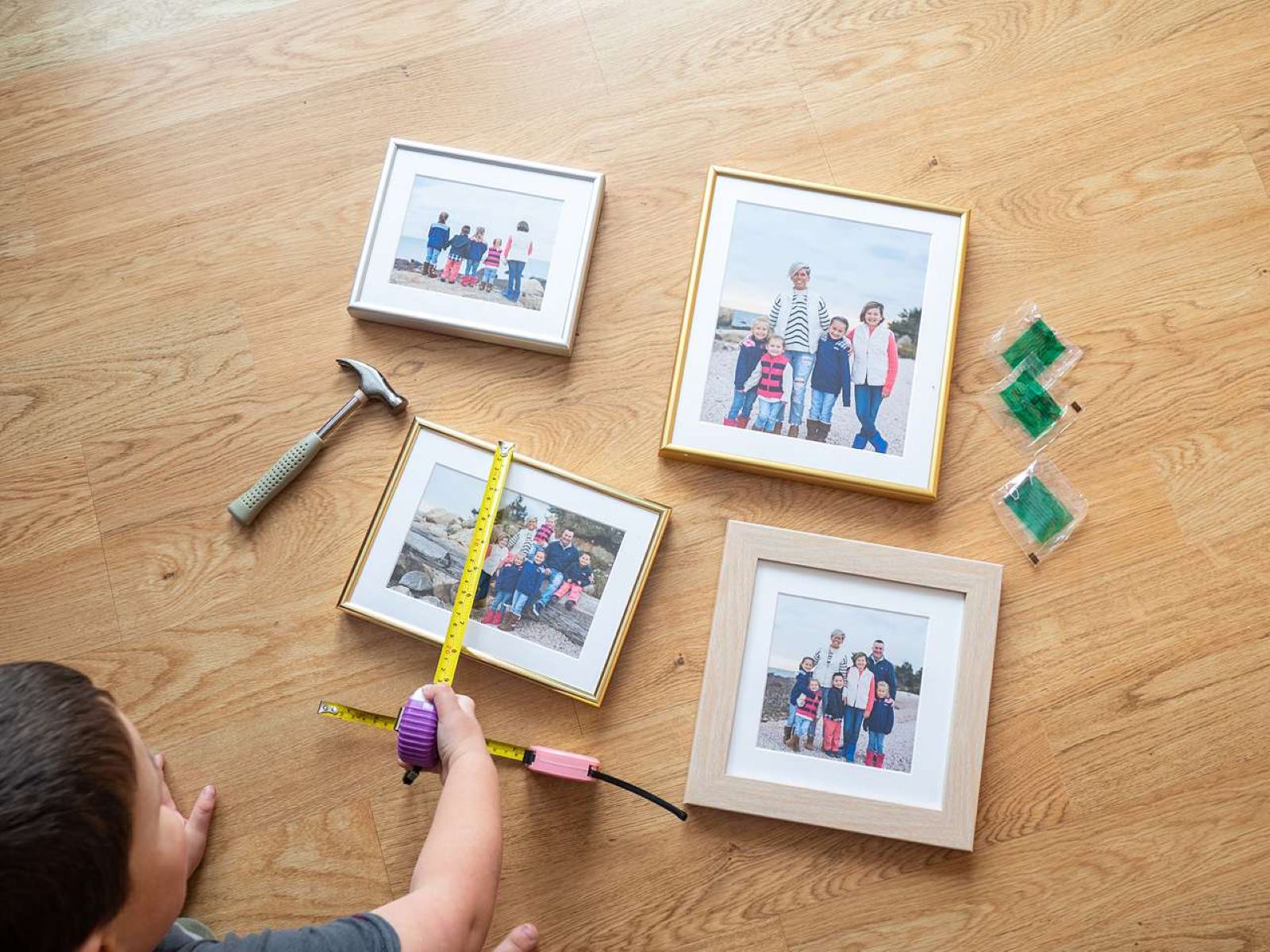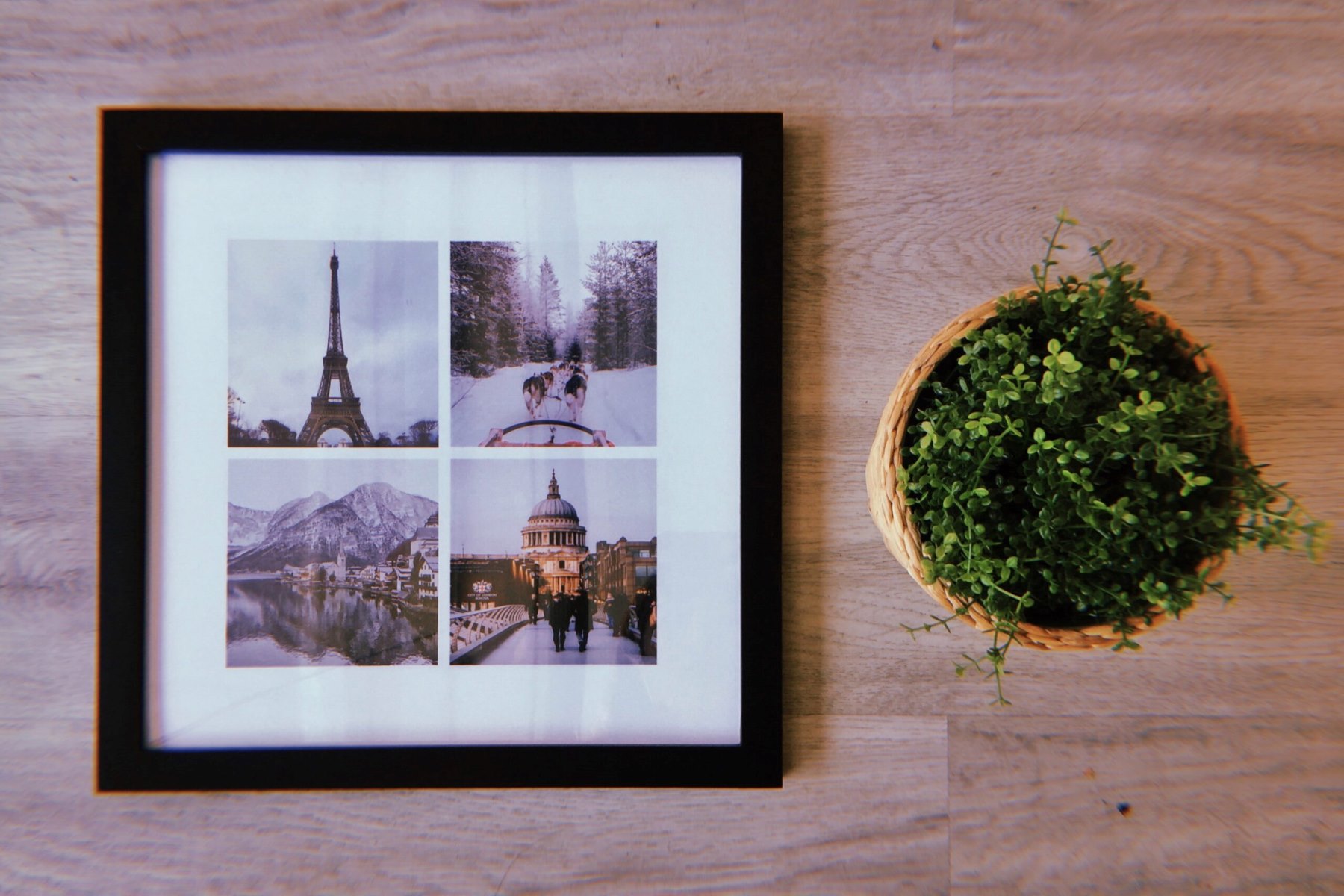

Articles
How To Store Framed Pictures In Garage
Modified: October 20, 2024
Discover expert tips on how to properly store framed pictures in your garage. Read our informative articles today!
(Many of the links in this article redirect to a specific reviewed product. Your purchase of these products through affiliate links helps to generate commission for Storables.com, at no extra cost. Learn more)
Introduction
Welcome to your complete guide on how to store framed pictures in the garage. Whether you’re downsizing, decluttering, or simply looking for a safe place to store your cherished memories, your garage can be a viable option. However, it’s essential to ensure proper storage techniques to protect your framed pictures from damage caused by humidity, temperature fluctuations, pests, and accidents.
In this comprehensive article, we will walk you through the process of safely storing your framed pictures in the garage. We’ll cover everything from assessing your garage space and selecting the right storage solutions to properly preparing and organizing your pictures for long-term storage.
Before we dive into the details, it’s important to note that while the garage can be a convenient storage space, it may not be ideal for all types of pictures. Extreme temperatures, excessive humidity, and lack of insulation can potentially harm delicate and valuable pieces. Therefore, it’s crucial to evaluate the specific conditions of your garage and take appropriate precautions to ensure the longevity of your framed pictures.
Now that we’ve set the stage, let’s move on to the first step – assessing the garage space.
Key Takeaways:
- Safely store framed pictures in the garage by assessing space, choosing proper storage solutions, and preparing pictures for long-term preservation. Organize efficiently and maintain picture quality with regular inspections and careful handling.
- Protect larger and smaller framed pictures in the garage by using spacers, acid-free materials, and vertical storage. Control temperature, minimize light exposure, and handle with care to preserve their quality for years to come.
Read more: How To Store Picture Frames
Assessing the Garage Space
Before you start storing your framed pictures in the garage, it’s important to evaluate the conditions of the space to ensure it’s suitable for long-term storage. Here are a few factors to consider:
- Temperature and Humidity: Extreme temperatures and fluctuations can cause warping, fading, and deterioration of your framed pictures. Similarly, high humidity levels can lead to mold and mildew growth. Use a digital thermometer and hygrometer to monitor the temperature and humidity in your garage. Aim for a temperature range of 50°F to 80°F (10°C to 27°C) and a humidity level between 40% and 50%.
- Insulation and Ventilation: Proper insulation and ventilation are crucial to maintain stable temperature and humidity levels. Check for any insulation gaps or leaks that could allow outside air and moisture to enter. Ensure that your garage is well-ventilated, allowing proper airflow to prevent the buildup of stagnant air.
- Pests and Vermin: Garages can be vulnerable to pests and vermin such as rodents, insects, and spiders. Inspect your garage for any signs of infestation, and take necessary measures to seal any entry points. Consider using pest control measures such as traps or repellents to protect your framed pictures.
- Light Exposure: Exposure to direct sunlight or artificial light can cause fading and discoloration of your framed pictures over time. Evaluate the amount of natural and artificial light that enters your garage. If there are windows or skylights, consider using blackout curtains or UV-filtering film to protect your pictures from excessive light exposure.
By thoroughly assessing your garage space, you can identify any potential issues and take the necessary steps to create an optimal storage environment for your framed pictures.
Choosing the Right Storage Solutions
Once you’ve assessed the conditions of your garage space, it’s time to choose the right storage solutions for your framed pictures. Here are a few options to consider:
- Shelving Units: Invest in sturdy, metal or plastic shelving units that can hold the weight of your framed pictures. Opt for adjustable shelves so you can accommodate pictures of various sizes. Make sure the shelving units are placed away from direct sunlight and are securely anchored to prevent any accidents.
- Wall Mounting: If you’re limited on floor space, consider utilizing the wall space in your garage. Install hooks, brackets, or rails to hang your framed pictures securely. Ensure that the wall mounting hardware is appropriate for the weight and size of your pictures.
- Storage Bins or Boxes: For additional protection, you can use storage bins or boxes specifically designed for storing framed pictures. Look for acid-free, archival quality containers to prevent any damage to the pictures over time. Label the bins or boxes for easy identification and organization.
- Picture Storage Bags: Transparent picture storage bags made from polyethylene or polypropylene can safeguard your framed pictures from dust, moisture, and pests. These bags are available in various sizes and are a cost-effective solution for short-term storage.
Consider the size, weight, and fragility of your framed pictures when selecting the appropriate storage solutions. It’s also important to leave enough space between each framed picture to prevent any accidental collisions or damage.
Remember to clean and declutter your garage before implementing any storage solutions. Removing unnecessary items and organizing the space will not only provide a safer environment for your pictures but also make it easier to access them when needed.
Preparing the Pictures for Storage
Before you store your framed pictures in the garage, it’s essential to properly prepare them to ensure their long-term preservation. Here are some steps to follow:
- Clean the Frames: Use a soft, dry cloth or a microfiber cloth to gently remove any dust or dirt from the frames. Avoid using cleaning agents or water, as they can cause damage to the frames or the artwork.
- Secure Loose Elements: Check for any loose elements such as hanging wires, hooks, or backing boards. Ensure they are securely attached to prevent any accidents or damage during storage.
- Remove Hardware: If possible, remove any hanging hardware such as screws, nails, or wire, as they can scratch or damage other framed pictures when stored in close proximity. Keep the hardware in a labeled plastic bag and store it safely.
- Protect the Glass: Cover the glass of each framed picture with acid-free, archival-quality glassine or acid-free tissue paper. This will prevent direct contact between the glass and other framed pictures, minimizing the risk of scratches or damage.
- Wrap with Bubble Wrap: For added protection, wrap each framed picture with a layer of bubble wrap. Ensure that the bubbles are facing towards the frame, providing cushioning and shock absorption.
- Secure the Wrap: Use packing tape to secure the bubble wrap in place, but be cautious not to tape directly onto the frame or the glass. Place a strip of tape on the open ends to keep the bubble wrap from unwrapping.
By following these preparation steps, you can safeguard your framed pictures from dust, scratches, and other potential damage during storage.
Wrapping and Protecting the Framed Pictures
Properly wrapping and protecting your framed pictures is essential to ensure their safety while in storage. Follow these steps to safeguard your pictures during the storage process:
- Dust Covers: If your framed pictures have a dust cover on the back, make sure it’s intact and in good condition. Dust covers help to keep dust and dirt from entering the frame and damaging the artwork.
- Cardboard or Foam Board: Cut out pieces of cardboard or foam board to fit the front and back of each framed picture. Place the protective boards on both sides to provide an additional layer of cushioning and to prevent any pressure or impact on the glass.
- Seal the Frames: Use painter’s tape or acid-free archival tape to seal the edges of the protective boards to the frame. This step ensures that the protective boards stay in place and further prevents any dust or debris from entering the frame.
- Label and Document: Before placing the wrapped framed pictures in storage boxes or bins, label each picture with its title or description. Additionally, it’s a good idea to create an inventory list to document all the pictures you’re storing. This will make it easier to locate specific pictures in the future.
- Properly Store: When placing the wrapped framed pictures in storage containers, ensure that they are positioned vertically rather than flat to minimize the risk of pressure or weight on the glass. If using storage bins or boxes, stack them carefully, with heavier items at the bottom and lighter ones on top.
Remember to leave enough space between each framed picture to avoid any potential damage. This can be achieved by using dividers or foam padding between the pictures.
By following these wrapping and protecting steps, you can safeguard your framed pictures from dust, scratches, and breakage while they are in storage.
Store framed pictures in the garage by wrapping them in bubble wrap or foam sheets, and then placing them in sturdy, stackable plastic bins to protect them from dust and damage.
Organizing the Storage Space
Proper organization is key when storing framed pictures in the garage. It will not only help you access specific pictures easily but also prevent any accidental damage. Here are some tips to efficiently organize your storage space:
- Categorize by Size or Theme: Group your framed pictures based on their size or theme. This will make it easier to locate specific pictures when needed and ensure efficient use of storage space.
- Label the Storage Containers: Label each storage container or box with the corresponding category or theme of the pictures stored inside. This will allow you to quickly identify which box contains the framed pictures you’re looking for.
- Create an Inventory List: Maintain an inventory list of all the framed pictures you have stored in the garage. Include details such as the title, description, dimensions, and location within the storage space. This list will serve as a reference when searching for specific pictures.
- Store Favorites Within Reach: If you have particular framed pictures that you frequently want to admire or rotate, keep them in a readily accessible area within the storage space. This way, you can easily retrieve and display them without having to sift through all your storage containers.
- Consider Storage Racks or Hanging Systems: To make efficient use of vertical space, install storage racks or hanging systems on the walls of your garage. These can be used to hold frames, canvases, or large photographs, providing easy access and preventing any potential damage from stacking or overcrowding.
- Utilize Shelving Units: If you’re using shelving units to store your framed pictures, organize them based on size or theme. Place larger and heavier frames at the bottom, with smaller frames on top. Use dividers or foam padding to separate and protect each picture.
By organizing your storage space effectively, you’ll create a system that allows for easy access, protects your framed pictures, and maintains the overall order within your garage.
Storing Larger Framed Pictures
Storing larger framed pictures in the garage requires some extra care and attention to ensure their safety. Here are some guidelines to help you store larger framed pictures effectively:
- Assess the Storage Space: Determine the available space in your garage that can accommodate larger framed pictures. Measure the dimensions of the pictures and ensure that you have enough vertical and horizontal space to store them without overcrowding.
- Protect the Corners: Larger frames are more susceptible to damage, especially at the corners. To protect them, use corner protectors made of foam or cardboard. Simply attach the protectors to each corner of the frame to provide cushioning and prevent any dents or scratches.
- Consider Vertical Storage: Storing larger framed pictures vertically can help to maximize space and prevent any unwanted pressure or weight on the glass. Use wall-mounted brackets or hanging systems designed to support larger frames and ensure they are securely mounted.
- Use Spacers: If you need to stack larger framed pictures horizontally, use foam or cardboard spacers between each frame to prevent any direct contact or pressure. This will help protect the glass and minimize the risk of scratches or breakage.
- Securely Anchor: Ensure that the storage shelves or wall-mounted brackets are securely anchored to the wall or floor. This will prevent any accidental tipping or toppling of larger framed pictures and ensure their stability.
- Create a Protective Barrier: Cover larger framed pictures with acid-free, archival-quality plastic sheets or shrink wrap to provide an additional layer of protection against dust, humidity, and potential impacts.
By following these steps, you can safely store your larger framed pictures in the garage, protecting them from damage and ensuring their longevity.
Storing Smaller Framed Pictures
Storing smaller framed pictures in the garage requires careful handling to prevent any damage or loss. Here are some tips to effectively store smaller framed pictures:
- Use Acid-Free Storage Boxes: Select acid-free, archival-quality storage boxes specifically designed for preserving photographs and artwork. These boxes are available in various sizes and provide protection against dust, light, and humidity.
- Separate and Organize: Place each smaller framed picture in its own individual acid-free sleeve or folder to protect it from scratches and dust. Then, arrange the sleeved or foldered pictures vertically in the storage boxes to prevent any pressure or impact on the frames.
- Label and Document: Label each storage box with the category or theme of the framed pictures stored inside. Additionally, create an inventory list, either on paper or digitally, to keep track of the smaller framed pictures and their corresponding storage location.
- Create Layers: If you need to stack multiple storage boxes, place a layer of padding, such as acid-free tissue paper or foam inserts, between each box to provide additional cushioning and protection. This will prevent any direct contact between the framed pictures and minimize the risk of damage.
- Maintain Stable Temperature and Humidity: Ensure that the storage area remains at a stable temperature and humidity level. Fluctuations can potentially damage smaller framed pictures. Aim for a temperature range of 50°F to 80°F (10°C to 27°C) and a humidity level between 40% and 50%.
- Avoid Direct Contact: When storing smaller framed pictures in the boxes, avoid stacking them too tightly or placing heavy objects on top. This can result in pressure on the frames, leading to potential damage.
- Elevate Storage Boxes: Keep the storage boxes elevated off the floor using pallets or shelving units. This precaution helps protect the framed pictures from potential water leaks or flooding that may occur in the garage.
By following these steps, you can efficiently store your smaller framed pictures in the garage, preserving their quality and ensuring their long-term protection.
Tips for Maintaining Picture Quality
Proper maintenance is crucial for preserving the quality of your framed pictures while they are stored in the garage. Follow these tips to ensure your pictures stay in excellent condition:
- Regularly Inspect: Set a schedule to inspect your framed pictures at least once every few months. Check for any signs of damage, such as mold, pests, or warping. Early detection allows you to address any issues promptly.
- Control Temperature and Humidity: Maintain a stable temperature and humidity level in your garage to prevent fluctuations that can harm your framed pictures. Consider using a dehumidifier or a humidifier to regulate humidity if necessary.
- Avoid Extreme Conditions: Avoid storing your framed pictures near heat sources such as radiators or electrical equipment that generates excessive heat. Likewise, keep them away from areas prone to dampness or extreme cold.
- Rotate the Frames: If possible, periodically rotate the framed pictures in storage to prevent the same areas from being exposed to light and potential damage over extended periods.
- Handle with Clean Hands: Before handling your framed pictures, make sure your hands are clean and dry. Any oils or moisture on your hands can transfer to the frames or glass, potentially causing damage or leaving fingerprints.
- Minimize Light Exposure: Reduce the amount of light that reaches your framed pictures by keeping them in light-restrictive storage bins or covering them with light-blocking materials. Avoid displaying them near windows or areas with direct sunlight.
- Keep Distance from Chemicals: Avoid storing framed pictures near substances that emit harmful gases or chemicals, such as cleaning products, paint thinners, or solvents.
- Keep Pests at Bay: Implement pest control measures in your garage to prevent any infestation that could damage your framed pictures. Regularly inspect the area for signs of pests and take appropriate measures to address the issue.
- Handle with Care: When taking framed pictures out of storage or moving them within the garage, handle them with care. Avoid dropping or mishandling them, as this can lead to irreversible damage.
- Consider Professional Storage: If your framed pictures hold significant sentimental or monetary value, you may want to consider professional climate-controlled storage options. These facilities are specifically designed to maintain optimal conditions for preserving delicate items.
Following these tips will help preserve the quality and longevity of your framed pictures while they are stored in the garage. Regular maintenance and care are essential to ensure that your cherished memories remain in excellent condition for years to come.
Read more: How To Decorate Picture Frames
Conclusion
Storing framed pictures in the garage can be an excellent solution when you need to free up space or find a safe place for your cherished memories. However, proper storage techniques are crucial to ensure the longevity and quality of your framed pictures. By following the steps and tips outlined in this comprehensive guide, you can effectively store your framed pictures in the garage while minimizing the risk of damage.
Remember to assess the conditions of your garage space, including temperature, humidity, insulation, and potential pest issues. Choose the right storage solutions such as shelving units, wall-mounted systems, or storage boxes to suit your needs. Properly prepare your pictures by cleaning them, securing loose elements, and protecting the glass.
When wrapping and protecting your framed pictures, use acid-free materials, corner protectors, and protective boards to minimize the risk of damage during storage. Organize your storage space by categorizing and labeling your pictures, creating an inventory list, and considering wall mounting or shelving units to maximize space.
Take extra precautions when storing larger or smaller framed pictures, such as using spacers, vertical storage, and acid-free sleeves or boxes. Regularly inspect your pictures, control temperature and humidity, minimize light exposure, and handle them with clean hands to maintain their quality.
By following these guidelines, you can confidently store your framed pictures in the garage, knowing that they are well-protected and preserved. With proper care and attention, your precious memories and artwork will continue to bring joy for years to come, even as they await their next display.
Remember, if you have valuable or irreplaceable framed pictures, it may be worth considering professional climate-controlled storage to ensure the utmost protection. Don’t hesitate to seek expert advice or assistance when it comes to preserving your most treasured pieces.
Now that you've got the scoop on securing framed pictures in your garage, why not tackle the rest of that space? With creative and smart garage organization strategies, transforming clutter into a neatly arranged area is a breeze. For those who relish a good DIY project, quick and easy storage solutions are just a click away. From maximizing vertical spaces to clever hacks for tiny items, these ideas ensure everything finds its place, making your garage as functional as it is tidy.
Frequently Asked Questions about How To Store Framed Pictures In Garage
Was this page helpful?
At Storables.com, we guarantee accurate and reliable information. Our content, validated by Expert Board Contributors, is crafted following stringent Editorial Policies. We're committed to providing you with well-researched, expert-backed insights for all your informational needs.














0 thoughts on “How To Store Framed Pictures In Garage”